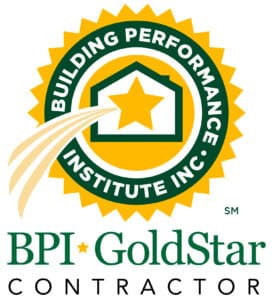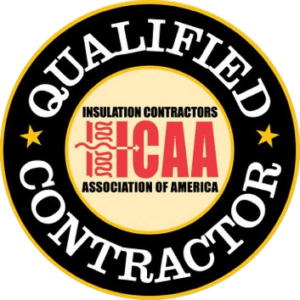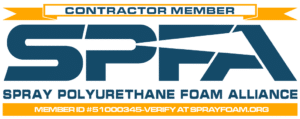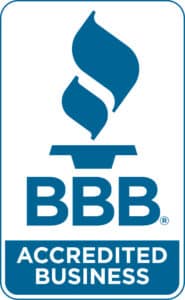Every homeowner knows how serious moisture intrusion can be. Moisture in your home can damage building materials, raise indoor humidity levels, encourage mold growth, and lead to poor indoor air quality.
There are many steps you can take to protect your home against moisture intrusion, and you’re probably familiar with common solutions like sump pumps and vapor barriers. One of the most effective ways to control moisture in your home, however, is a lesser-known measure called air sealing.
What Is Air Sealing?
Air sealing is the process of locating and sealing gaps and cracks in your home’s construction. These openings—called air leaks—are created when a house is built or renovated. They can be located just about anywhere but are especially common where two different materials are joined together and where penetrations are made so that plumbing, electrical, and ductwork can be installed.
Air can travel freely through air leaks, allowing unfiltered, unconditioned outdoor air to come in and clean, conditioned air to escape. This can lead to a slew of comfort problems—if your house is drafty, it’s probably due to air leakage—and it can also drive up your energy bills. But one of the most serious issues associated with air leaks is moisture intrusion.
Moisture Gets Inside Your Home Through Air Leaks
Air can hold water vapor and often carries a considerable amount of moisture with it. So, if air is leaking into your home through air leaks, moisture is, too.
In the summer, humid outdoor air will seep inside through air leaks and land on cooler surfaces in your home, where it will condense into water. In the winter, warm, heated air from your living spaces can travel into unconditioned parts of your home (like your attic) through air leaks and condense on the colder surfaces in that space.
Sealing up the openings that allow air and water vapor to move uncontrollably into and out of your living space will help prevent moisture issues in your home. When done correctly, air sealing leads to comfortable, safe, efficient, and healthy homes.
Spray Foam Blocks Air and Water Vapor
There are many materials that can be used to seal air leaks. Caulk is commonly used to close up small gaps around windows and doors, for example. The most effective way to air seal, however, is with professionally installed spray foam. Spray foam acts as an impenetrable air and moisture barrier and it’s also a great insulator. Plus, it will never need to be replaced and can protect your home for decades to come.
Find Out if Your Home Needs Air Sealing
Most homes can benefit from air sealing, especially older homes. But it’s not always easy to tell where your air leaks are located or how severe the problem is. An energy assessment conducted by a professional energy assessmentor like Insulation Man will show you exactly where your home’s air leaks are located and shed light on the problems they’re causing. By diagnosing your home’s moisture problem first with an energy assessment, we’re able to implement the most effective and efficient solutions.
Since 1975, Insulation Man has been helping homeowners in Binghamton, New York and throughout the surrounding areas create comfortable, energy efficient, and healthy homes. We are the go-to air sealing and insulation contractor in Binghampton, and we can help you solve your home’s moisture problem with our air sealing services.








